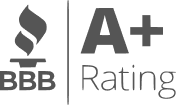They say that asking the right questions is the source of all knowledge. In that spirit, you need to ask about sources of funding for nonprofits.
There are numerous sources of funding for nonprofits. However, some are better than others. It’s vital to do your research to find the options that are right for the unique needs of your nonprofit organization.
What are the Main Sources of Funding for Nonprofits?
Individual donations and major gifts
This is money that comes from foundations, trusts, and just regular, ordinary people who believe in your mission. These gifts are a key source of income for many nonprofits and a vital tax deduction for individuals. Just be sure that your efforts in this area are legal, ethical and economically sound.
As you seek these kinds of gifts, don’t forget others in this category that can be just as beneficial. It doesn’t always have to be about dollar amounts. In-kind gifts can sometimes help more than monetary ones. For example, if the money from a government grant has not come in yet, you might have to delay programs. However, if a venue donates space to you, it’s a win-win for everyone. They get the good publicity that comes from helping a nonprofit and you get to start your program on time. You should also look closely at making the most of the hours you receive from volunteer staff and sharing resources with other organizations. These can save you time and money, which are both valuable commodities for a not for profit. These are most beneficial for:
- Spreading your mission
- Recruiting ambassadors for your enterprise
- Gaining an understanding of your target audience
- Generating good will
Government Grants
These can come from local, state or federal government sources. Perhaps their biggest advantage is that you don’t have to repay the money. It is also typically exempt from taxes. On the other hand, this source of funding for nonprofits has many drawbacks.
For one thing, those offering grant money prefer to work with only those nonprofit organizations with millions of dollars in revenue. Additionally, they put so many rules and stipulations in place, you will soon wonder if it’s all worth the trouble. In most cases, you will have to provide frequent status reports on your use of the money. Also, many have the requirement that if you don’t spend every dime of the money on your project, the funds you don’t use you must return to them. Before considering this option, you have to ask yourself whether you can meet all of their demands. This is ideal for:
- Connecting with other nonprofits
- Defining your mission
- Attracting attention to your cause
Not for profit loans
You could turn to a traditional bank for a 501c3 loan but banks are not especially friendly to nonprofits. They don’t always understand the unique situation of not for profit organizations. As a result, they treat you more like a for-profit business, expecting you to have millions of dollars in cash reserves and enough collateral to cover the cost of the loan.
Unfortunately, nonprofit bank loans also come with substantial interest payments on top of the loan, which is risky for a nonprofit. You also have to ask whether your governing rules even give you the power to borrow and under what conditions. These are good for:
- Capital projects
- Long term initiatives
- Developing strategic partnerships
A line of credit from Financing Solutions
A business line of credit is one of the most flexible tools you can have in your nonprofit funding arsenal. You can use it for anytime you are in danger of running out of cash. Best of all, you only withdraw what you need when you need it. With a line of credit from Financing Solutions (www.financingsolutionsnow.com), the line costs you nothing until you actually use it. Then, you only have to repay what you take out. You can use this:
- When reimbursements and funding sometimes don’t arrive in time to start programs and events on time
- When you can’t miss payroll or stop your mission
- If emergencies come up
- Because it may be difficult to ask board members for money
It’s important to avoid putting all your eggs in one basket. The best nonprofit business financing strategy is diverse and multidimensional and versatile. This is how you build sustainability and increase growth.
Sources of Stress for Nonprofits and How to Overcome Them
How to identify problem areas – you can’t conquer a problem if you don’t know what it is or where it comes from. When you run a nonprofit, it can sometimes seem like problems are coming at you from all directions. And you don’t have the time to slow down and analyze it all. For instance, your organization might be experiencing high turnover. However, you are so busy just trying to keep the seats filled and get your jobs done that you can’t stop to figure out why. This leads to a never ending series of hiring, training, saying goodbye and then hiring all over again.
If you don’t get a handle on such a problem, it can quickly spell failure for your organization. Catching problems early will prevent minor issues from becoming major headaches. Even if you don’t have time to address each individual dilemma, there are steps you can take to help prevent them from occurring in the first place. Pay close attention to your numbers and stay up-to-date on fundraising and trends in your industry. Additionally, create a process for both employees and donors to communicate with you. These are all simple ways to stop potential problems before they start. You should also develop measurement tools so that you will recognize the moment something changes in a particular area.
How the new federal tax law will affect your nonprofit – although 501c3 organizations are tax exempt, there are still tax issues that apply to you and that you need to stay aware of. For example, the Federal Tax Cuts and Jobs Act contain many changes for compliance and deductions for states, which could affect their own tax laws and spending plans. This, in turn, could indirectly influence your fundraising activities and mission. In addition, there are provisions which may directly impact your organization, such as the new rule that if a nonprofit has income or losses from unrelated business activities, you will now have to report them differently. To combat these changes, it’s imperative that you learn as much as possible about the new law and the areas that apply to you.
How to conduct grant research more effectively – there are numerous government and corporate grants available today. However, knowing where they are, which ones are right for you and how to apply is a full time job. Your staff may be spread too thin already to devote anyone to this task exclusively. Even if you do have a grants person on your team, chances are that he or she is still lost in trying to find the best opportunities.
Often, the problem is actually that there are too many research tools out there and it’s not always easy to know whether you are using the right ones, how to afford the ones you need and to discern the strengths and weaknesses of each. The key is working smarter, not harder, in locating these prospects. One of the first things you should do is to connect with your state’s association for nonprofits. This is typically a great starting place for educational resources, discounts, alerts and state-specific databases.
How to hire enthusiastic yet capable staff – in any industry, finding competent staff is a challenge. It’s made even more difficult for nonprofits, because you are unable to offer the competitive salaries and extensive benefits and perks like your for-profit counterparts. You may find it effortless to find somebody passionate about your mission or someone with the skills you require for a position, but it can be hard to find both in the same person.
Having the right people in your corner is essential for achieving your goals. Instead of trying to compete with the for-profits, a better idea is to use your strengths to your advantage. Studies show that today’s employees want more than just a paycheck. They are looking to build a long lasting relationship with a company whose desire for purpose and quest for change matches their own. Nonprofits can use this shift in employment goals to attract the best and brightest prospects.
To do this effectively, you must highlight how their passion and your purpose fit together and communicate your story on multiple channels and social media platforms. Your employees are one of your most valuable assets, so treat them as such. Oh, and always remember to make payroll on time.
How to foster sustainability – while achieving your mission helps you thrive, having a significant amount of nonprofit capital financing will help you survive long enough to thrive. Sustainability involves leadership, planning, flexibility and finances. The first one requires preparation for transitions, both those you anticipate and those that take you by surprise. This means you will need to have both an emergency management plan and a source of emergency nonprofit funding. For all nonprofit funding issues, turn to Financing Solutions.
If you constantly struggle to cover your expenses and invest in growth, you are caught in what’s known as the nonprofit starvation cycle. You must know how much it really costs to deliver your programs and services as well as having diverse income streams. Although you are a not for profit, this doesn’t mean you have to exist like a pauper. With a nonprofit business line of credit from Financing Solutions, you can break this vicious cycle and put your organization on the path to longevity and tremendous success.




